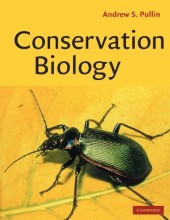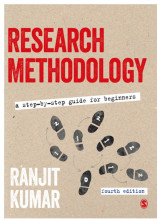Summary: Conservation Biology | 9780521644822 | Andrew S Pullin
- This + 400k other summaries
- A unique study and practice tool
- Never study anything twice again
- Get the grades you hope for
- 100% sure, 100% understanding
Read the summary and the most important questions on Conservation biology | 9780521644822 | Andrew S. Pullin.
-
4 Effects of habitat destruction
-
4.1 Introduction
-
On what element can be predicted if a certain well studied species will or will not be present in a certain area?
On basis of the presence or absence of certain key habitat features this species is known for.
-
The requirements of persistence of a species can be divided in two groups, what groups are these?
- Biotic
- Abiotic
-
4.1.1 Deterministic versus stochastic effects of habitat loss
-
Give the definition of the term: Deterministic extinction
An extinction that is the predictable effect of the absence of certain requirements for persistence. For example total habitat destruction.
-
Give a definition of the term: Stochastic extinction
An extinction that is the result of events that are unpredictable and dependent on chance, for example weather and population fluctuation. Partial habitat destruction enhances the chance a species gets extinct because of stochastic factors.
-
What is the difference between stochastic and deterministic extinction?
Deterministic extinction is the direct and predictable effect of the absence of certain requirements of persistence for a species. Stochastic extinction is the effect of unpredictable events that become fatal.
-
4.2 Patterns of habitat destruction
-
Give a definition of habitat fragmentation
The process whereby a large continuous area of habitat is both reduced and divided into two or more fragments.
-
How do the fragments that remain after habitat fragmentation differ from the original habitat?
- The total area remaining is smaller
- The proportion of the edge in relation to the total area is greater
- Any given point within the fragmentation is on average closer to the edge than before
- On average each fragment is more isolated from other fragments than before
-
In what three ways does habitat destruction and fragmentation occur?
- In patches within a habitat
- In a wave across a habitat
- By linear features crossing the habitat, roads and power lines for example
-
4.3.1 Community- level effects of fragmentation
This is a preview. There are 1 more flashcards available for chapter 4.3.1
Show more cards here -
What is the formula S=CA^z for and where do the letters stand for?
The formula is the liniair relationship between the number of species and the size of an area.
S=nr. of species
C=constant given by the intercept with the axis
A= the area size
z= the slope of the line
-
What does the theory of island biography predict?
As fragments become smaller and more isolated, species extinction will be more frequent and colonizations less frequent leading to the loss of species richness in remaining habitat.
- Higher grades + faster learning
- Never study anything twice
- 100% sure, 100% understanding






























